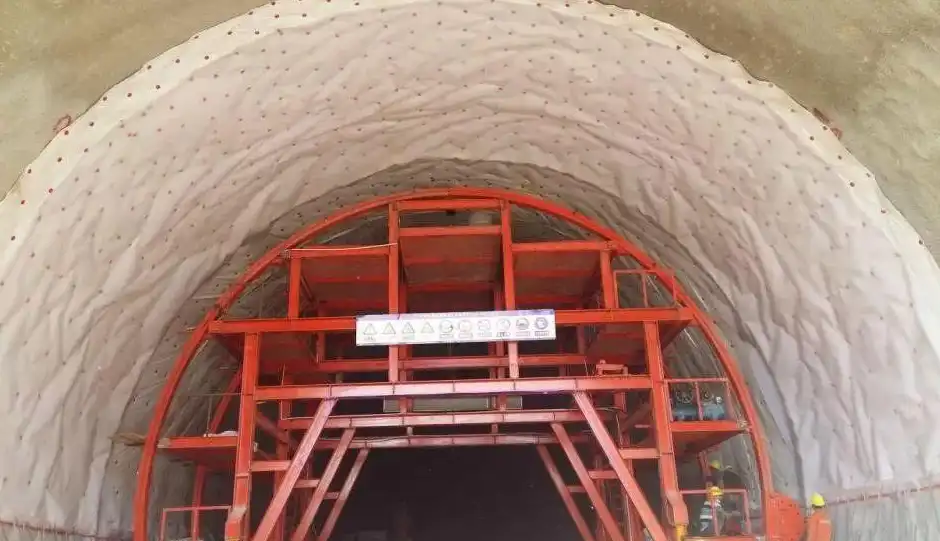
1. The construction technology and method of tunnel waterproofing board adopt nailless paving and double track welding/hot melt welding technology. The tunnel waterproof board can be pre assembled into large blocks by hot melting the double tracks outside the tunnel. Choose a flat area outside the tunnel. The waterproof board is arranged according to the perimeter of the tunnel's internal contour and the construction length of the lining ring. The weld seam is welded using an automatic crawling double track welding machine, and after passing the test, it is rolled up.
2. The trolley of the suspended trolley tunnel is paved with a simple trolley. The car should have sufficient strength and stiffness, as well as a more flexible walking device, and be equipped with a platform that can reach any part of the surrounding tunnel. Fix the non-woven fabric in the predetermined position with a simple car, and then firmly nail the non-woven fabric onto the initial support surface with a thermoplastic EVA washer. The laying of non-woven fabric should be carried out from bottom to top. The lower non-woven fabric should be pressed onto the upper non-woven fabric, and a certain margin should be reserved.
When reserving the suspension of tunnel waterproof boards, they should be laid from the bottom of the upper ring. The fixing of the waterproof board adopts thermocouples, and after melting, plastic washers are used to firmly bond the waterproof board to the tunnel. The overlapping joints between tunnel waterproof boards should be welded on both sides using a fully automatic peristaltic hot melt welding machine, which has the function of adjusting temperature and hot wedge speed. After welding, a ventilation duct should be left between the two welds.
2: The second specific method
The protruding part of the waterproof board, such as the steel mesh at the bottom of the tunnel, should be disconnected first, and then smoothed with cement mortar and plain mortar for construction.
When there are obvious pipelines, disconnect them and smooth them with cement mortar.
When laying waterproof boards in the tunnel, if there is a protruding part in the anchor cable, the screw head should be kept 5mm and removed, and then tightened with a plastic cap
4. Cement stabilized soil should have a smooth and even surface, with no more than 5cm of protrusions and indentations.
5. Place 350g/m2 geotextile on the surface of concrete with a gasket. When there is a drainage board, place it at the same time. Then, use a nail gun to nail it firmly, and anchor it with cement steel nails and steel bars. The length should not be less than 50mm, with an average arch of 3-4/m2 and a side wall of 23/m2
To prevent cement mortar from penetrating the geotextile, the geotextile should be laid first and then the waterproof board should be laid.
When laying waterproof boards in tunnels, manual welding machines should be used to heat melt them onto the inner lining. The bonding tensile strength between the two should not be less than the compressive strength of the waterproof board, and it should be sturdy and compact.
8. Waterproof boards should be bonded using a welding machine for hot melt bonding. The bonding area should not be less than 10 centimeters, and the bonding tensile strength should not be less than 80% of the compressive strength.
9. The distance between the waterproof board at the joint in the tunnel and the middle of the secondary lining should not be less than 1.0m. Before laying the ground waterproof pavement, the waterproof board cannot be tightened, and the surface should be closely matched with the cement stabilized soil surface without cracking.
.png)
.png)












